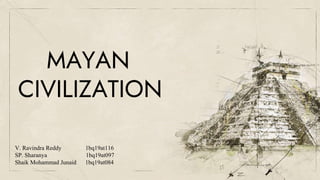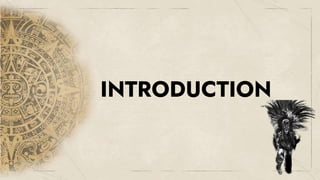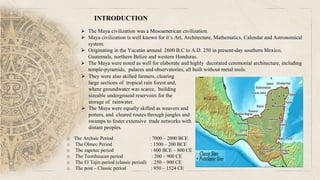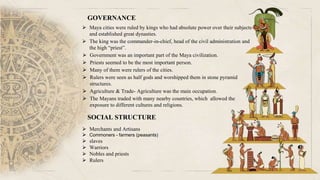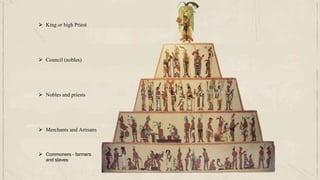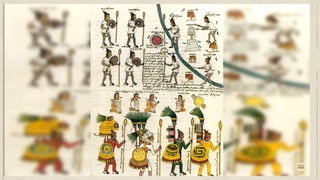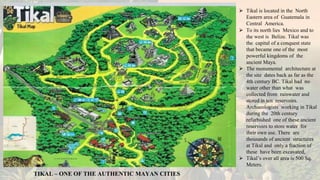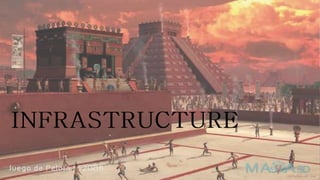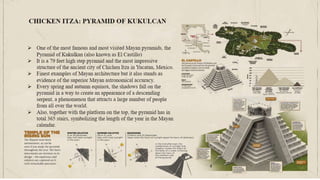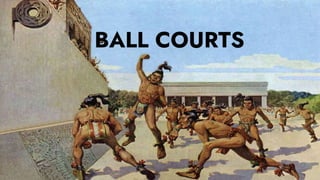The Maya civilization originated around 2600 BC and flourished in southern Mexico, Guatemala, Belize and Honduras. They were skilled farmers, builders, mathematicians and astronomers who constructed elaborate cities with temples, palaces and pyramids. Maya cities had strict social hierarchies led by a divine king and priests. They built structures like palaces and ball courts that incorporated symbolic elements reflecting their cosmology. The Maya left behind significant architectural achievements like the royal palace at Palenque before the civilization declined around the 10th century AD.
